When you think of a famous character from the movies, what’s the first thing that comes to mind? Is it Captain America’s shield? Marty McFly on his hoverboard? How about Darth Maul and his double-sided lightsaber? When we look back at the films we love, there’s normally a certain costume or prop that typifies how we feel about the character. What is 007 without his Martini or Aston Martin?
For one group of collectors, it’s not just enough to imagine. Many fans around the world take their fandom to the next level by collecting props and costumes – and when they do, they probably look up Prop Store.
With offices in London and LA, Prop Store is one of the world’s leading purveyors of movie and TV memorabilia. Their regular auctions make international headlines, as lots such as Brad Pitt’s car from Once Upon a Time… in Hollywood or a ghost trap from the original Ghostbusters sell to enthusiasts for big sums. Part art scene, part fan convention, it captures the imagination of anyone who has thought about what it would be like to wield a lightsaber or try on Iron Man’s suit.
One Man’s Trash, Another Man’s Collectable
Prop Store was co-founded by CEO Stephen Lane, who spoke to us from the company’s London office, where the next wave of unbelievable treasures are meticulously checked. Having started the company in 1998, the journey began a long time ago in a convention hall far, far away. A collector and seller of Star Wars action figures, Lane committed to buying a prop blaster from the films and sought out the company that made it to authenticate the piece. Once he was there, he was amazed at the artefacts they had lying around.
“Pulse rifles from Aliens, swords from Flash Gordon, shields from Clash of the Titans and blasters from Star Wars,” Lane recalls. “They explained that they make them for the production, and at the end of the film, they send them back, put them back on the shelf. They try to redress them, repaint them, and then eventually rent them to some other production. If that doesn’t happen, they just throw them away. I was just absolutely astonished that there was no consideration of the cultural significance, and their collectable nature.”
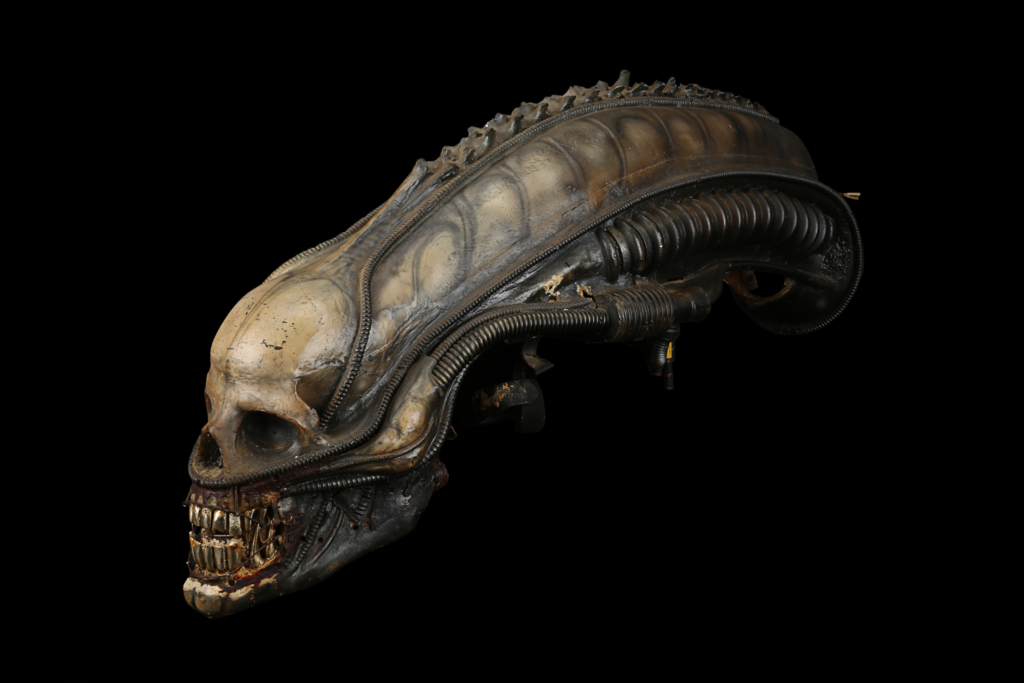
That spark of curiosity led to the eventual creation of Prop Store, one of the founding names in prop and costume collecting, and the gold standard in the industry to this day. This status came from years of seeking out props and memorabilia, before they were considered valuable: “These artifacts have ended up in a very Indiana Jones archaeologist-style setting,” he says with a chuckle. “I was digging through boxes in old warehouses trying to find something, putting it on the internet, with the whole world being able to see that and reach that marketplace. It was in its absolute infancy.”
Thanks to figures such as Lane, prop collecting has become a global business, with the top pieces selling for what you would expect to pay for classic artworks. In 2017, Chris Pratt’s “Star Lord” helmet from Guardians of the Galaxy sold for £130,900 at live auction, while Lane tells the story of a Star Wars TIE fighter helmet that sold for over £200,000 in 2016, but couldn’t fetch £3,000 on a convention table when he first started.
The Real Deal
So, how do you know that the tuxedo you bought was really the one that Daniel Craig wore in Casino Royale, or that a Star Trek uniform really was on board the Enterprise?
“Well, authenticity is absolutely key and critical when anybody is making the decision to invest in collectables, in art, and obviously in props and costumes,” Lane begins as he explains his meticulous authentication process. “The first step is understanding the provenance, the chain of ownership… it’s looking at the history of the item. It’s looking at the materials that the artefact is fabricated from. It’s looking through the Prop Store library of production images. For the last 20 years, we’ve been collecting and collecting behind-the-scenes stills and photographs that have been taken by crew members. We have a lot of images and references from different angles, the way you might see an asset or an artefact presented on screen.
“Then, it’s getting down to the more forensic nature of it. It sounds very basic, but Blu-ray, to us, is an absolute blessing. When we’re looking at Blu-ray, we’re now comparing the grain of wood on the handle of an axe from The Shining, for example, or the stitch patterning and the thread work in a jacket or a garment, and looking at the weave to ensure that not only is it an authentic artefact, but we can actually then drill down further and do what we call ‘screen matching’, where we match up – mark for mark, wood grain to wood grain, or whatever it might be – and say that it’s not just one used in the film, but it’s actually this one, in this scene, used at this time. Collectors get very excited about that.”
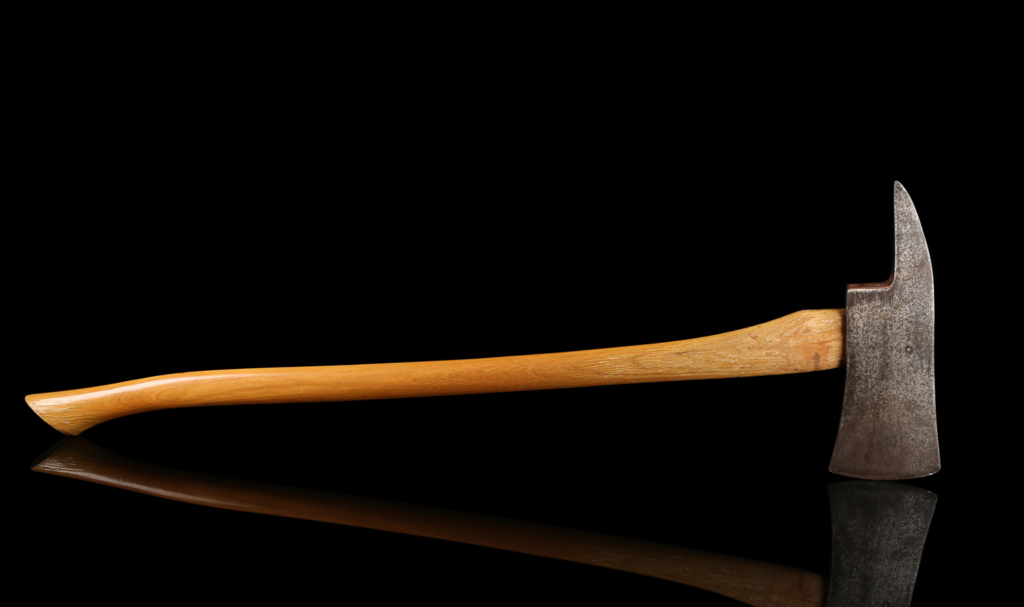
For Passion… Or Profit?
Value and authenticity may well excite them, but there’s also something deeper behind collectors’ love of acquiring pieces of movie history. “A lot of collectors are buying out of nostalgia,” he says. “A lot of this is driven by passion. It’s a connection to the props. Some of it can be relative to when a collector comes of age with disposable income. I grew up with the original Star Wars, and I’m always interested in what’s out there from the original trilogy. But what’s fascinating now is that kids who grew up with the prequels, they’re now in their late 30s, 40s, whatever, and they’re looking solely for prequel content. So, it’s the revisiting of your youth, and reconnecting with a moment in time.”
With profit, however, comes speculation. Surely there have been a lot more suits and anonymous bidders amongst the enthusiastic amateurs? Lane concurs: “When I first started Prop Store, all I was working with were very passionate film lovers, movie watchers, collectors. There has been a dynamic shift.”
That isn’t to say that this is an exclusive pastime for the wealthy. “The entry level to the market is in the 20s, 50s, 100s, maybe even 1,000s,” he says, listing the starting prices for memorabilia. “Those are a big part of the collecting community who buy into this content. But, subsequently, there’s a much more generalised interest and acceptance that these are significant artefacts which should be preserved for the future in museums and exhibitions. We sell now directly to film and studio archives who have realised it’s all part of their heritage, and they want to recover some of it.”
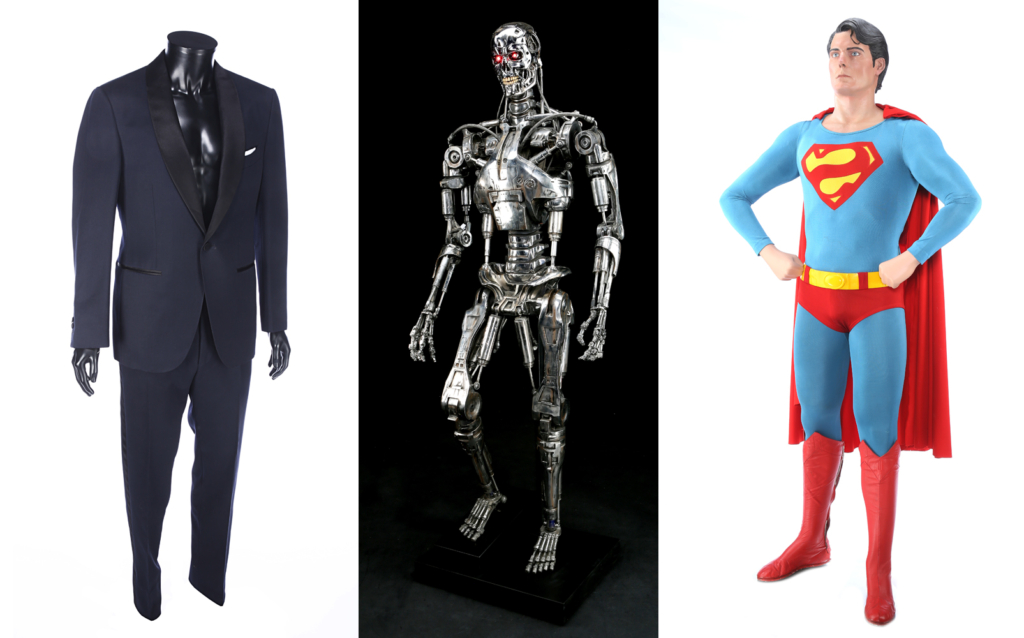
Clients also include the rich and famous. While Lane can’t reveal specific names for privacy reasons, he confirms that the stars of these movies often buy back their on-set wardrobes or hero weapons: “We’ve had directors, producers, talent, actors who have bought back costumes that they’ve worn in their films,” he says. “Because only very rarely do they have the amount of control to say that they want to keep everything that they wore, contractually.”
The Digital Revolution
With so much interest, finding historic items in workshops or dusty lofts is becoming less likely. Lane describes classic props and costumes as a “finite” business, as many of the big treasures have been discovered and collected. Equally, cinema is a more digital industry nowadays – Tom Holland’s Spider-man suit, for example, is a mostly digital creation, while most sets have at least some digital element to them. Is time running out for people who want to actually hold a piece of cinematic past?
“You’ve got to start thinking about NFTs. That’s to come,” Lane answers, referring to the recent headline-making sales of non-fungible tokens.
He argues that the growing appetite for digital rarities is just another evolution in the art of prop collecting. “The medium of storyboards and concept designs and production designs moved from pen and ink, and pencil, and watercolour to digital,” he recalls. “We used to joke when this first started changing, ‘Who’s going to want to collect the hard drive with that stuff?’ Fast-forward to this year, and people make 60-plus million dollars for a piece of digital art. Suddenly everybody’s releasing digital content. So, you can now go back and revisit all of those storyboards which have never been seen before.”
History In Your Hands
For now, however, the most desirable items remain tangible. In the more than two decades of its existence, Prop Store has come across some of the most recognisable objects and pieces of clothing in Hollywood history. Lane himself has held many of them, even retaining some for his own collection. The office from which he talks to us houses one of Christopher Reeve’s original Superman suits, and John Hurt’s spacesuit from Alien.
But despite boasting all these valuables, there is one that got away: “Going back to 2018, we had Harrison Ford’s fedora from Raiders of the Lost Ark. It was consigned to us for auction, but, boy would I have loved to have held on that piece. What a piece of movie history!”
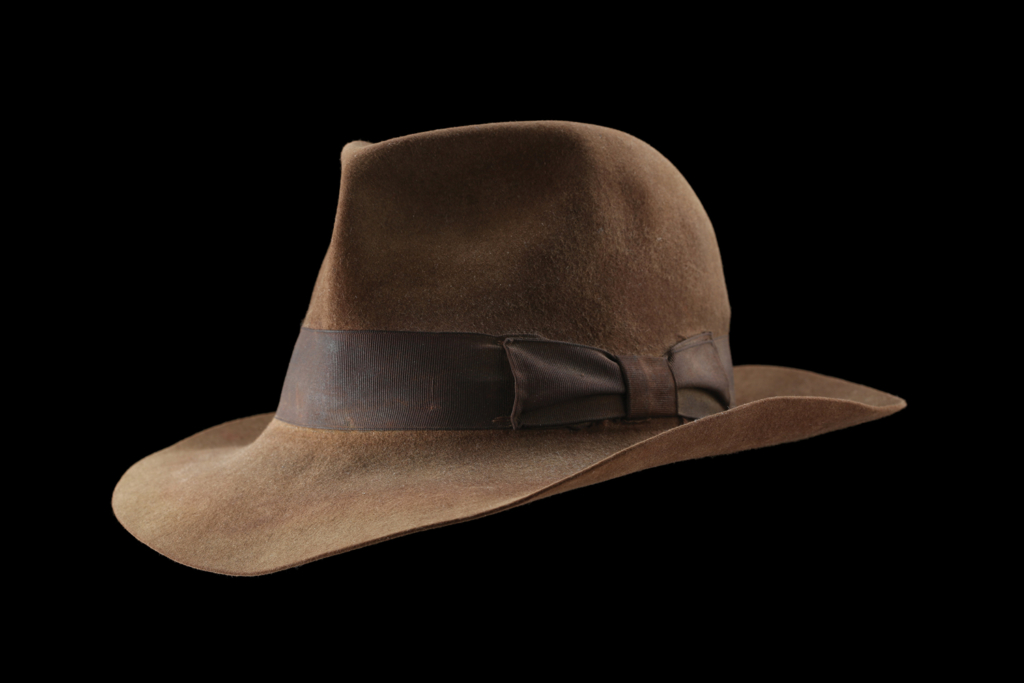
Owning a piece of the magic is why collectors do what they do. For those in love with props and costumes, it’s about replicating a feeling from the past, where we all sat in awe of what was transpiring on the big screen. “It takes you on a journey,” Lane says. “It reconnects you with something so special. Going to the cinema is such an experience in itself, it’s rare for somebody who really enjoyed a movie at a cinema to not recall it. So, I think it’s just this opportunity to reconnect with the past, to reconnect with your youth, and carry that experience forward.
“We were selling the Batpod vehicle from The Dark Knight Rises, and there I was, sitting on Christian Bale’s motorbike. What could be more fun than that if you’re a movie lover?”
Find out more at prop-store.com.

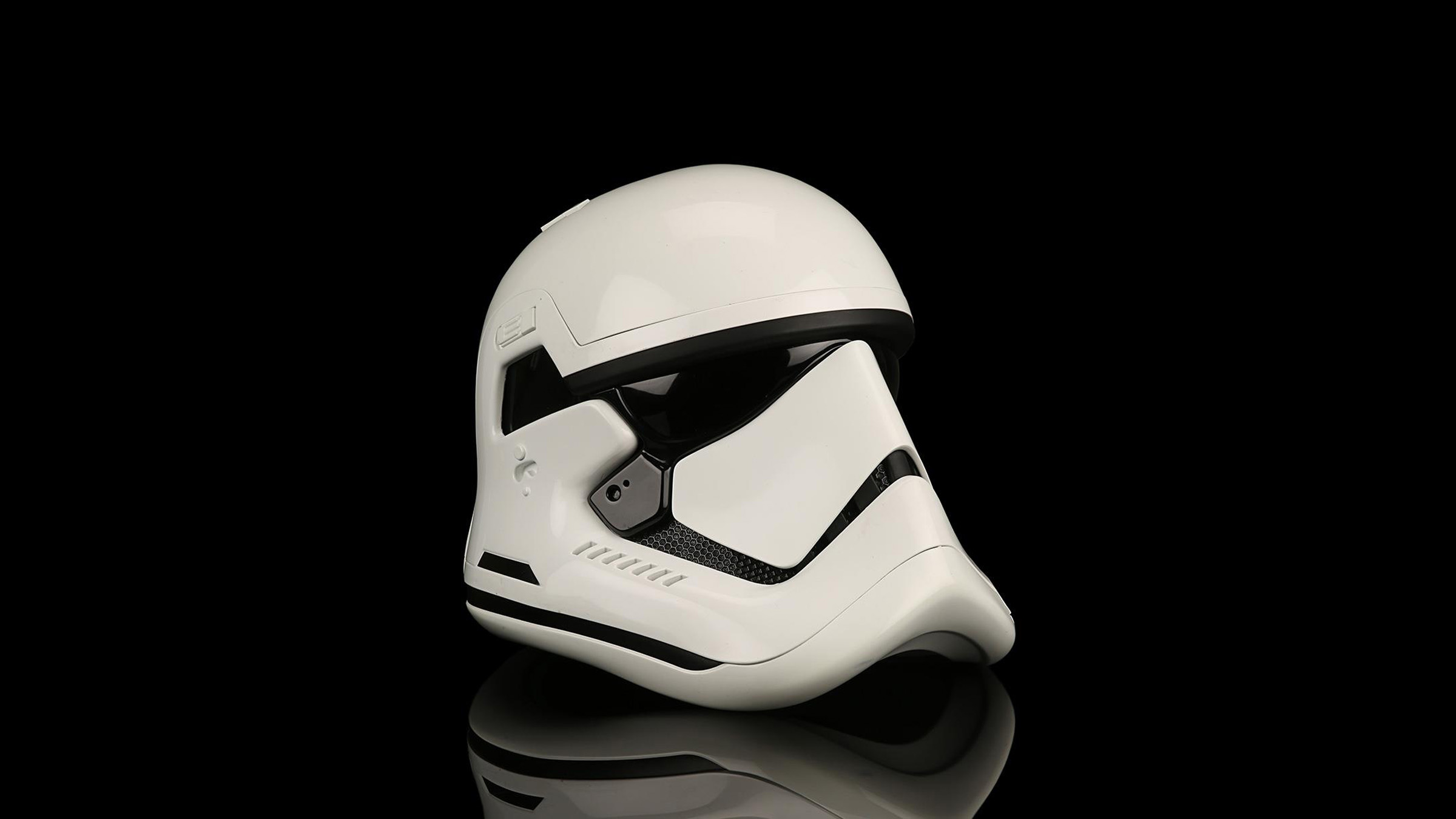






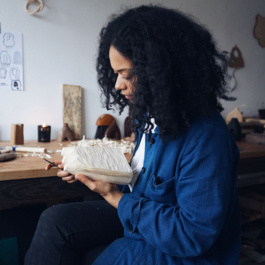




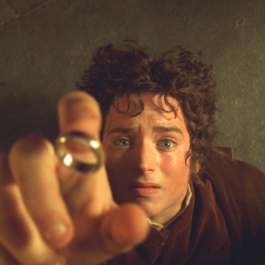
Sorry, the comment form is closed at this time.